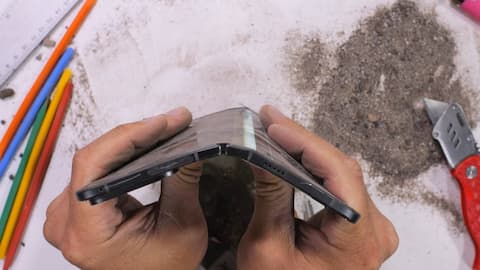Google Pixel 9 Pro Fold's durability tested: Check results here
What's the story
Google's latest foldable smartphone, the Pixel 9 Pro Fold, has undergone a rigorous durability test by JerryRigEverything.
The device was put through a bend test and teardown to assess its structural integrity.
Surprisingly, the hinge was not identified as the weakest point of the device during these tests.
The exterior of the phone is crafted from "aerospace-grade high-strength aluminum alloy," which also covers the surface of the hinge.
Screen resistance
Inner screen more susceptible to damage
The Pixel 9 Pro Fold's Gorilla Glass Victus 2 cover screen, known as Actua, "scratches at a level six with deeper groves at a level seven."
The Ultra Thin Glass inner display or Super Actua, shows scratches at level two and can be damaged by fingernails.
This indicates that while the outer screen offers some resistance to scratches, the inner display is more susceptible to damage.
Durability
Hinge performance and dust vulnerability
The hinge of the Pixel 9 Pro Fold is made from "multi-alloy steel." However, it has been observed to grind when exposed to dirt and sand due to a lack of dust protection (IPX8).
In a closed state, the device withstands bend tests without any issues. Problems arise when it's open and bent from the back, with the back panels meeting over the hinge's spine but offering little resistance.
Design flaw
Antenna lines and hinge durability
The antenna lines next to the hinge, a design issue carried over from last year's model, are a weak point in the Pixel 9 Pro Fold.
During the bend test, these lines on the cover screen side caused the display to pop off from its case.
However, unlike Samsung Z Fold6 which locks out its two halves to prevent catastrophic bending, the hinge of Pixel 9 Pro Fold managed to survive this stress test.
Internal structure
Teardown reveals internal components and heat dissipation
A recent iFixit teardown of the Pixel 9 Pro Fold revealed a larger battery beneath the cover screen, while the other half housed a smaller cell and motherboard.
The USB-C is on its own board for easier repair.
A vapor chamber was found underneath the battery and Tensor G4. It was noted that most thermal heat dissipation occurs from the backside or internal side of the device when closed, flowing from processor to vapor chamber then into center of Fold.
